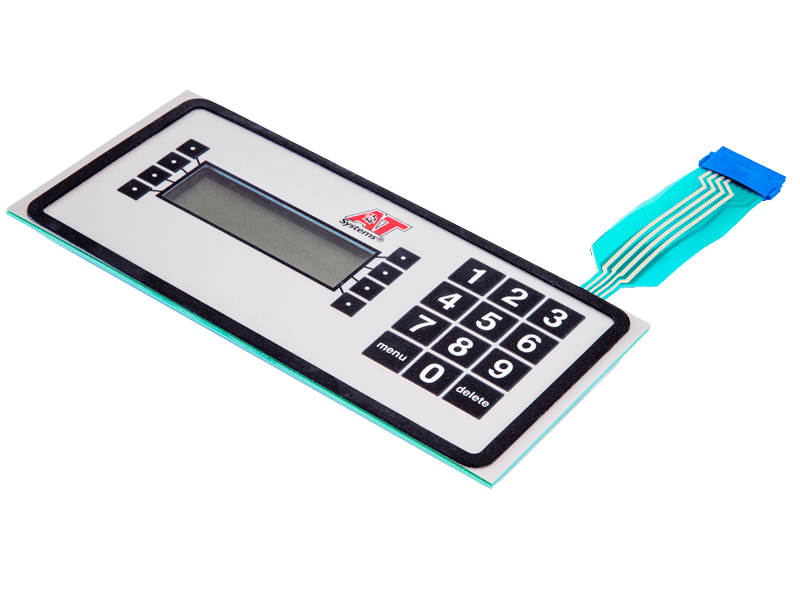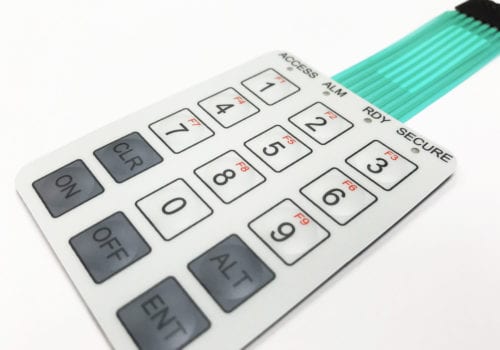The Role of Membrane Switches in Enhancing Product Aesthetics
The Role of Membrane Switches in Enhancing Product Aesthetics
Blog Article
Recognizing the Value of Membrane Switches in Interface
Membrane buttons are essential components in the style of effective customer interfaces, helping with not just performance however additionally improving visual charm and customer interaction. Their unique functions, such as resistance to environmental aspects and customizable styles, make them appropriate for a diverse variety of applications throughout several sectors. As we explore the numerous benefits and future trends connected with Membrane modern technology, it becomes clear that these buttons are greater than just parts; they stand for a convergence of advancement and practicality. The ramifications of this modern technology on user experience are worth checking out even more.
What Are Membrane Buttons?

The spacer layer, which has sticky buildings, permits the separation of the circuit layer from the overlay, guaranteeing that the switch remains in a non-activated state up until pushed. When stress is related to the overlay, it compresses the spacer layer, linking the space and completing the circuit in the underlying layer. This design not just minimizes the physical area required for traditional mechanical buttons yet likewise enhances the resilience of the tool, as Membrane switches are normally resistant to dirt, wetness, and other ecological elements.
Commonly located in applications ranging from customer electronic devices to medical devices, Membrane switches are indispensable to contemporary innovation, supplying a user-friendly and effective interface that aligns with contemporary style requirements.
Benefits of Membrane Switches
While numerous switch modern technologies exist, Membrane Switches deal distinct benefits that make them particularly desirable in various applications. One of the main advantages of Membrane buttons is their portable design, which enables space-saving implementations in gadgets where realty is limited. Their thin account not just enhances aesthetic allure but also helps with lightweight building and construction.
One more considerable advantage is their resistance to environmental factors. Membrane switches are typically sealed versus dampness, dust, and contaminants, making them suitable for use in requiring settings, such as clinical devices and industrial equipment. This toughness expands the lifespan of the switch, decreasing upkeep expenses and boosting integrity.
Moreover, Membrane buttons can be tailored to satisfy details design requirements, integrating special graphics and shades that enhance user interaction. Their responsive responses alternatives can also be customized to give a rewarding individual experience. In addition, Membrane switches are affordable, particularly in high-volume applications, as they can be generated efficiently.
Applications in Numerous Industries

In the customer electronics sector, Membrane switches are prevalent in tools such as microwaves, washing machines, and remotes. Their responsive responses and aesthetic alternatives improve individual experience while providing a smooth, modern-day appearance. Additionally, vehicle producers make use of Membrane switches in control panel controls and infomercial systems, where room is restricted, and individual involvement is crucial.
Additionally, the industrial industry leverages Membrane switches in control panels for equipment and tools, permitting instinctive operation in frequently severe environments. Their resistance to chemicals and dampness ensures durability and reliability in these applications. Generally, the flexibility of Membrane Switches adds dramatically to their prevalent usage, making them crucial in numerous technical domains.
Design Factors To Consider for Membrane Switches

When making Membrane buttons, a number of essential considerations have to be taken into consideration to make certain optimum capability and user experience. First of all, the option of products is critical; selecting resilient, top notch substrates more helpful hints can boost the switch's longevity and resistance to environmental factors such as dampness and temperature fluctuations.
Second of all, the style of the graphic overlay should focus on quality and convenience of usage. Symbols and message need to be legible, and the layout should promote instinctive interaction (membrane additional info switches). Additionally, responsive responses is essential; including a responsive dome or other mechanisms can boost the customer experience by supplying physical confirmation of activation
Another important aspect is the switch's electrical performance. Designers have to make sure that the conductive traces are correctly developed to minimize resistance and stay clear of signal interference. This entails analyzing the needed actuation force and making certain compatibility with the digital components they will certainly interface with.

Future Patterns in Membrane Innovation
As innovation remains to advancement, Membrane buttons are positioned to develop dramatically, driven by developments in products and manufacturing methods. One arising pattern is the unification of advanced products, such as adaptable substrates and conductive inks, which improve longevity and decrease the total weight of Membrane switches. These materials not just boost the tactile action yet also permit the layout of buttons that can endure harsher environmental conditions.
Moreover, the assimilation of touch-sensitive technologies is transforming standard Membrane Switches right into even more interactive user interfaces. Capacitive touch sensors embedded within Membrane button panels can give an extra user-friendly and receptive customer experience, straightening with the expanding demand for smooth, contemporary designs in consumer electronics.
Furthermore, improvements in printing strategies, such as electronic and 3D printing, make it possible for rapid prototyping and customization of Membrane switches. This flexibility allows manufacturers to respond quicker to market needs and customer choices.
Last but not least, sustainability is coming to be a substantial emphasis, with suppliers discovering eco-friendly products and procedures. As these patterns unfold, the future of Membrane technology assures boosted capability, visual charm, and environmental responsibility, solidifying their role in advanced customer interfaces throughout numerous industries.
Conclusion
In conclusion, Membrane Switches stand for an important element in the design of individual interfaces, incorporating capability with visual flexibility. As advancements in modern technology continue, the advancement of Membrane switches is anticipated to additional improve customer interfaces, driving advancement and boosting usability in a significantly complex technological landscape.
Membrane switches are integral components in the design of reliable customer interfaces, facilitating not only performance yet also improving visual appeal and individual communication.Membrane Switches serve as an essential component in different individual interfaces, promoting a seamless interaction in between customers and digital devices.While various button modern technologies exist, Membrane Switches deal distinct advantages that make them especially desirable in different applications.In addition, Membrane buttons can be customized to satisfy specific design demands, integrating special graphics and shades that boost individual communication.In verdict, Membrane Switches stand for a crucial part in the style of individual interfaces, integrating performance with visual versatility.
Report this page